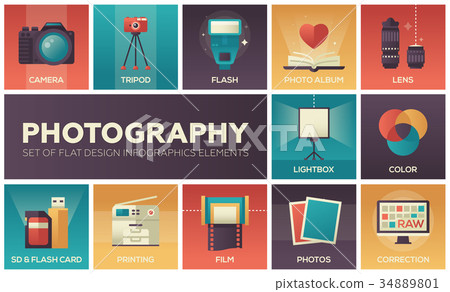Change Your Digital Photography By Mastering Lights Strategies That Can Boost Your Images-- Uncover The Typical Mistakes That Could Be Holding You Back
Change Your Digital Photography By Mastering Lights Strategies That Can Boost Your Images-- Uncover The Typical Mistakes That Could Be Holding You Back
Blog Article
Web Content Writer-Gillespie Ibrahim
As a professional photographer, you understand that lights can make or damage your pictures. Recognizing https://telegra.ph/Essential-Digital-Photography-Gear-What-You-Really-Required-To-Get-Started-01-07 of both natural and artificial light is important for catching the state of mind and quality you aim for in your job. Whether you're chasing after the perfect golden hour radiance or fine-tuning your synthetic arrangements, mastering these elements can elevate your photography dramatically. But there are common pitfalls that many ignore, and recognizing them can change your technique to every shoot. Allow's explore what you might be missing and how it can impact your results.
Understanding All-natural Light
Understanding natural light is critical for any photographer looking to boost their job. https://writeablog.net/amado99delmy/discovering-the-world-with-the-lens-travel-photography-fundamentals 's the foundation of excellent photography, affecting state of mind, tone, and clarity. When you shoot outdoors, take notice of the moment of day. The golden hour-- soon after sunrise and before sundown-- provides soft, cozy light that can change average scenes right into spectacular pictures.
Do not underestimate https://telegra.ph/Prepare-To-Uncover-The-Tricks-Of-Traveling-Photography-Basics-That-Will-Change-Your-Journeys-Right-Into-Fascinating-Aesthetic-Ta-01-07 of cloudy days. relevant website diffuses sunlight, developing a soft, also light that's best for portraits and macro digital photography. You'll locate colors appear this kind of lights without severe shadows.
Placing issues, also. Always consider your topic's positioning to the source of light. If the sun's behind your topic, you might end up with a shape, which can be significant yet mightn't be what you desire. On the other hand, straight sunlight can create uncomplimentary shadows.
Try out angles; sometimes, altering your point of view can generate outstanding results. Usage all-natural reflectors, like water or sand, to jump light onto your subject, adding dimension.
Mastering Artificial Light
Grasping man-made light is vital for photographers that wish to take their skills to the following degree. Whether you're making use of speedlights, studio strobes, or continuous lights, recognizing how to adjust these resources can considerably improve your pictures.
Start by acquainting on your own with the fundamentals of light quality, instructions, and shade temperature level. Experiment with different modifiers like softboxes, umbrellas, or grids to manage the soft qualities or harshness of the light.
You'll find that soft light frequently produces complementary outcomes, while harsher light can include drama and deepness. Don't avoid shadows; they can enhance the three-dimensionality of your subjects.
Pay close attention to the positioning of your lights. A light located as well close to your subject can produce uncomplimentary results, while too far away can result in a lack of information. Use a light meter or your cam's histogram to ensure you're revealing properly.
Lastly, remember that artificial light can be blended with ambient light for creative effects. Balancing these resources might take technique, but once you grasp it, your photography will truly radiate.
Techniques for Various Circumstances
When you step into various shooting situations, adapting your lighting methods is important for capturing the best photos. For exterior pictures, use the gold hour-- early morning or late afternoon light-- to soften darkness and improve complexion.
If it's a rough lunchtime sun, think about utilizing a reflector to bounce light back onto your subject or seek shaded areas for a more also direct exposure.
In low-light circumstances, like interior occasions, boost your ISO and make use of a wide aperture to let in more light. A tripod can assist remove cam shake, permitting longer exposures without obscuring.
If you're contending night, try out off-camera flash to develop dynamic illumination and deepness in your images.
For product digital photography, make use of diffused lighting to avoid rough representations. Softboxes or light outdoors tents can aid accomplish this result.
When photographing landscapes, consider the direction of light and time of day, as it can considerably alter the state of mind of your shot.
Always be ready to change your setups and placing based on the scenario, as flexibility is crucial to understanding lighting in photography.
Final thought
To conclude, mastering lighting is vital to elevating your photography abilities. Accept all-natural light's elegance throughout golden hour, and don't shy away from experimenting with man-made light strategies. By adjusting your method to various scenarios, you'll record stunning pictures that resonate with feeling and quality. Keep in mind, the ideal lighting can transform a normal shot into something phenomenal, so maintain practicing and improving your understanding of both all-natural and synthetic light. Satisfied shooting!
